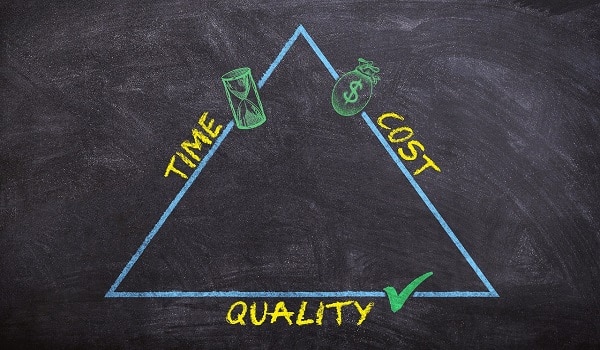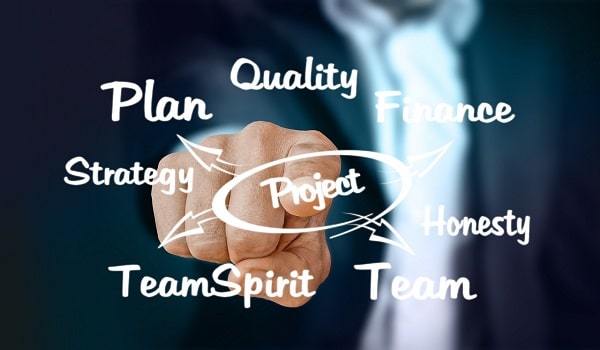In the context of industry 4.0, any industrial company wishing to grow and compete must adopt a strategy of continuous improvement of methods. To simplify the definition of industry 4.0, we can say that it is a new way of managing and organizing production and improvement methods. Small changes at the different levels of the company improve its overall performance and thus customer satisfaction.
Deploying operational excellence is part of this logic. It is a set of approaches to improve continuous performance and ensure an optimal operational experience. In other words, operational excellence is all about being good and better than other competitors in the organization of processes and tasks to achieve its objectives. Therefore, it is obvious that this is notion is strongly linked to improvement. It also refers to efficiency, effectiveness, organization of means and objectives.

Let’s find out the details!
Definition of operational excellence
Although some authors describe the operational excellence approach as a philosophy while others see it as a continuous improvement approach, here we will try to simplify things.
It is possible to consider operational excellence as an objective sought after by companies wishing to continuously improve their performance by implementing continuous improvement processes. As a lever of competitiveness for companies, this continuous improvement project reduces operational risks in application of strategic objectives.
It should be noted that there are several improvement techniques and methods that deal with the notion of operational excellence such as the EFQM Model, lean or Lean manufacturing, Lean manager, Lean six Sigma, PDCA, Kaizen, Just In Time, Kanban. Note that all these management terms have a common goal: operational excellence to implement change management to improve performance and ensure operational productivity.
As a systematic and methodical approach performed in a company, operational excellence is based on operational improvements that aim to maximize the industrial performance of all the company’s stakeholders (continuous improvement manager).
It is a philosophy of problem solving and process optimization. Every actor will be mobilized to provide best practices and optimization processes to achieve collective performance.
In order to achieve operational improvement objectives, certain theories, action plans and continuous improvement projects are applied. Here are 3 fundamental levers that we find most interesting to implement in a continuous improvement process.
Working Standard management
Working standards are part of the documentation essential to the operation of the company. They describe how operators should control their tasks to avoid waste, delay or non-conformity.
Striving for operational excellence, managers and consultants need to manage their working standards well by ensuring that they are regularly updated so that they are always effective. The digitalization of documents helps the company to ensure a better management by measuring their use, compliance and possibilities of improvement of production processes (supply-chain).
Therefore, as part of your digital transformation, it is important to use continuous improvement tools to ensure operational excellence.
Working standard management is part of Lean management. The ultimate goal of this approach is to eliminate waste throughout the value chain for greater efficiency. As part of the implementation of continuous improvement, it also helps to improve performance indicators.
In project management, the combination of operational excellence and Agile methodology improves the company’s process.
Agile methodology
Along with operational excellence, Agile methodology provides a framework for continuous improvement. Note that this agility is mainly based on a logic of short loops and sprints. Operators mobilize in order to create a Minimum Viable Product which is imperfect but will be able to cope with customer feedback. This allows to start sprint again to implement an optimized product/service. This use and habit transformation forces companies to be more flexible and capable of following the evolution of the customers’ expectations. This is why this methodology has become increasingly essential to all companies today in improvement projects.
A3 Problem Solving
Named after the paper format, the A3 methodology is a problem solving methodology that is based on breaking down the problem in order to find the right way to solve it and improve the efficiency of the process.
This process involves several steps:
- Problem identification and clarification: why dealing with it, how it started…,
- Definition of the current situation and the objective to be achieved
- Research and analysis of the causes of the problem: by using the 5 whys or the WWWWWH tool
- Search for the best 5 solutions that have a positive impact on problem solving
- Definition of action plan: how will the required actions be implemented?
- Improvement of continuous improvement methods and tools
- Mentoring results and implementing the necessary adjustments
Waste Elimination
Operational excellence aims to optimize the company’s productivity by eliminating waste related to operations. To achieve this objective, we rely on methodologies such as MUDA to eliminate production waste.
First of all, it should be noted that the application of this method allows reduction of costs and production deadlines of a project. It improves the performance of existing processes and methods. It focuses mainly on 7 wastes.
What are the 7 wastes?
Overproduction
Producing parts more than orders or before order creates logistical complications. Indeed, it causes higher storage costs. The time spent on these additional tasks is also a waste.
Over processing
It is basically doing more work or performing a task that does not add value. This also affects quality control since the products resulting from over processing go through the latter.
Overstocking
Linked to the first waste (overproduction), overstocking can create dead or dormant stocks that are forgotten and will no longer be usable. It is important to know that inventory management is a key industry activity. To limit overstocking, we simply need to find a balance at the level of management of supplies, production and delivery.
Unnecessary transport or trips
This refers to the movement of raw materials, outstandings or documents that provide no value to the customer. It is an unnecessary consumption of resources and time that impacts costs. For example, making empty transfers or unnecessary trips between several storage sites or workstations adds to the burden on employees.
Unnecessary movement
Non-ergonomic workstations and poorly organized workspaces cause unnecessary staff movement that can be eliminated by acting on the cause. This type of waste can affect the company’s production. It can also affect the health and safety of teams.
Defective parts and scrap
Producing defective and non-compliant parts could damage the company’s reputation and profitability. Ideally, it would be better to do right the first time yet in reality; the goal is to reduce scrap to a bare minimum.
Waiting time
The organization of the production or distribution chain should eliminate the waiting time between two tasks thus maximizing time exploitation. To avoid wasting time and regain fluidity, it is recommended that you ensure regular replenishment of its stocks and optimize its internal planning.

In other words, we can say that waste is a resource-consuming activity that does not add value to the end customer. However, it is important to differentiate between necessary waste and pure waste. We speak of necessary waste when activities that do not add value are essential to ensure product quality (continuous product improvement) and customer satisfaction (customer relations). For example, testing, planning or even reporting.
A tool to promote operational performance
At picomto, we develop our digital work instructions solution to address a number of issues for manufacturers seeking industrial performance: having a better standards management in production, being equipped with a flexible and powerful tool to help operators in their tasks, collecting field data to sustain continuous improvement processes, reduce production errors and meeting the customers’ expectations (customer experience). The purpose of this improvement tool is to ensure continuous improvement to achieve operational efficiency.




Leave A Comment